Residents and guests of Moscow know that in the very center of the capital there is a historical district with an interesting name – Kitay-gorod. It starts from Red Square, bordering in the north with Theater Square and Okhotny Ryad, and in the east with Lubyanskaya and Staraya Square, while the southern border is set by the Moskva River. All this is part of the Tverskoy district. Kitay-gorod includes such iconic streets for the city as Varvarka. Ilyinka, Nikolskaya.
BY TOPIC: Why the name of the creator of the Guinness Book of Records is not Guinness.
But if this area of the capital has a long history, then it is reasonable to ask: what did the Chinese do in the very center of medieval Moscow? Do not rush to be surprised, the history of this area is old, interesting and not directly related to China.
origin of name
So, let’s start with the most important thing – with the origin of the name of the district. In fact, China, as a country, apparently has nothing to do with it. Historians tend to think that the key word here is “whale”. So in Russia since the XI century they called knitted poles, which were used in the construction of fortifications. A broader interpretation of the word “kita” is something knitted or woven into a braid. According to other versions, the district owes its name to the Italian word citta or cittadelle, that is, “strengthening”, “fortress”, or the Turkic “roll” – a city, fortress, or even the English city – city center. They say that earlier this part of Moscow was called the New or Another City, and then it was called the Middle City or Kitay-Gorod, because the Tatars have the word “China” just and means average. Among all other versions, there is one that is still connected with China. Previously, the common people associated the world market with this country, with which Russia had long-standing trade relations. Any fabric was called “Chinese”, and the presence of a market in this part of the city gave rise to its name. But still, the versions related to the fortified part of the city or its central / middle part seem more logical.
BY TOPIC: Why are people in Germany called Germans and not Germans?
History of Kitay-Gorod
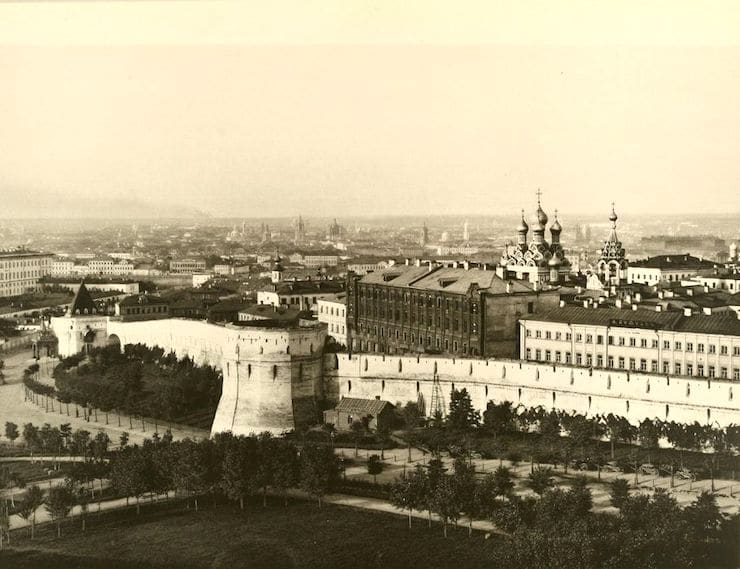
China Town in Moscow, 1887. From left to right: Barbarian Gates and the deaf Faceted (Polyhedral) Tower
Kitay-gorod, like the Kremlin, is the oldest district of Moscow. The Great Posad, originally located in the Kremlin under Dmitry Donskoy and Ivan Kalita, expanded to the east, occupying the territory of Kitay-Gorod. In the 16th century, the nobility began to move there – merchants chose Zamoskvorechye for themselves, and artisans – Zaryadye, unattractive for the rich, periodically flooded with water. And although Ivan the Terrible tried to populate Kitai-Gorod with merchants, ousting the nobles, this practice did not take root.
In 1701, there were 272 households in Kitai Gorod, and the vast majority of them belonged to the clergy, boyars and nobles. But here is also the center of urban trade – Gostiny Dvor and Torgovye Ryads. Gradually, by the 18th-19th centuries, the area began to be considered a merchant area. And in the 19th century, a city exchange appeared here, banks and offices began to open. By the beginning of the 20th century, Kitai-Gorod had become an analogue of the City of London. After the Revolution of 1917, the district became the site of state-party institutions, the buildings of the Central Committee of the CPSU were located here. Today, it is here, on Staraya Square, that the Administration of the President of Russia is located.
There is also an erroneous opinion that Kitay-gorod got its name from the long wall around the center of Moscow, similar to the Great Wall of China. However, Kitay-gorod has nothing to do with the VKS, so it was Kitay-gorod that first appeared in Moscow, and only in the 16th century it was surrounded by a wall.
BY TOPIC: Why did they speak Latin in ancient Rome, and now they speak Italian?
Wall around Kitay-gorod
In the Middle Ages, the area received a system of fortifications. First, the townspeople in 1394 began to build a moat, expecting the invasion of Tamerlane. He walked along the line of modern Vladimir / Pskov and Bolshoy Cherkassky lanes. For more than a hundred years, the protection of the settlement was limited to this. But in 1535, the mother of Ivan the Terrible, Elena Glinskaya, ordered the construction of a stone wall. The construction was consecrated by the church, and the first stones in the foundation were laid by Metropolitan Daniel. The walls were erected by the Italian Petrok Maly Fryazin. The fortification construction took into account current military trends – the walls were lower than those of the Kremlin, but thicker, and guns could be placed on the platforms. The wall was built in 3 years. It had a length of 2567 meters, 12 towers and covered an area of 63 hectares.
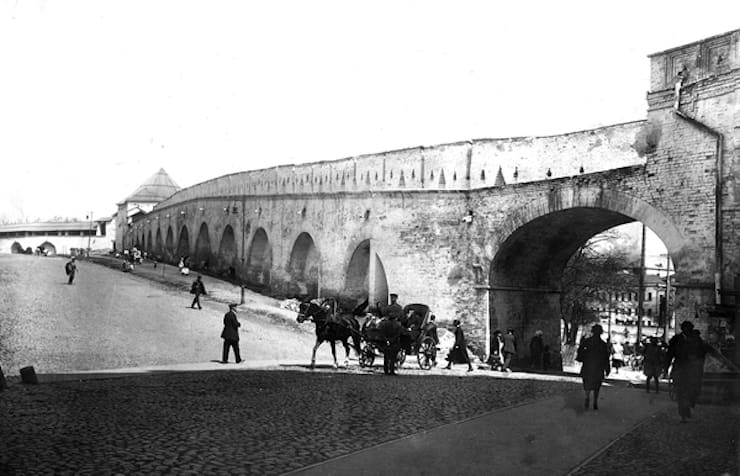
It must be said that the walls of Kitay-Gorod played a role in the defense of the city. So, in 1571, battles were going on near it with Khan Devlet Giray, but he did not dare to storm the fortifications. And in 1611, during the Moscow uprising, the fortress helped the townspeople in their confrontation with the Commonwealth. The walls were periodically repaired and strengthened, new gates appeared.
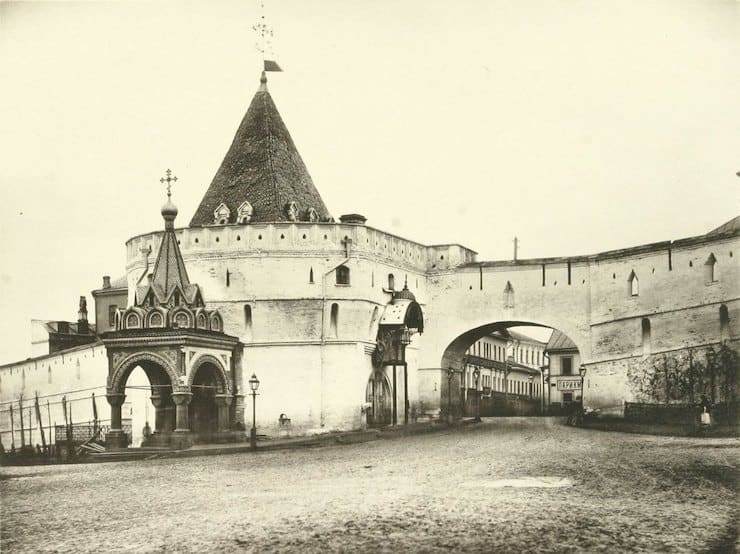
Yes, and Peter I during the Great Northern War, fearing the invasion of Charles XII, ordered to update the walls. But by the 18th century, the walls of Kitay-Gorod had become meaningless from a military point of view. The fortification began to deteriorate and crumble, the townspeople began to attach stables and sheds to the towers, an embankment was built along the wall near the Moscow River.
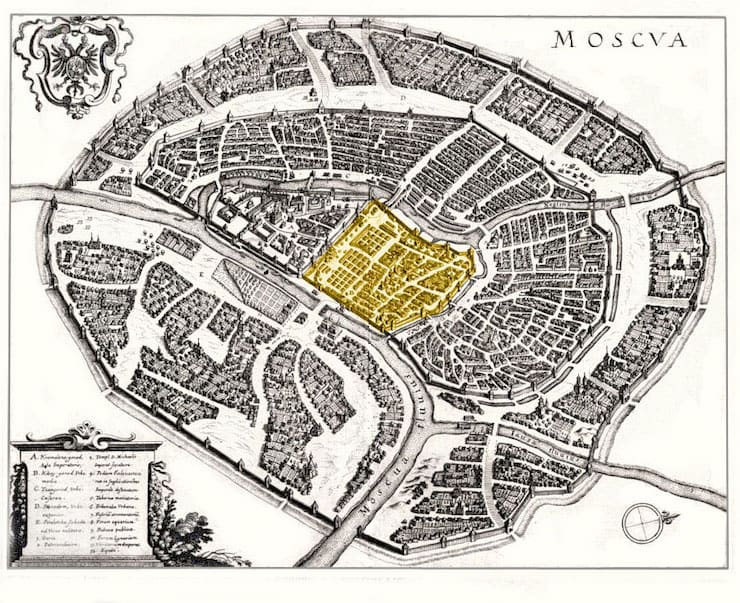
Kitay-town on the plan (1638) by Matthäus Merian highlighted in yellow
The developing city simply swallowed up the walls of Kitay-gorod. By the end of the 19th century, they were in a deplorable state. After the revolution, the Moscow authorities decided on a complete restoration of the historical monument, the work lasted from 1925 to 1932. As a result, it was decided to demolish the walls of Kitay-gorod – the streets grew, and the old fortifications frankly interfered. In 1934 the walls were demolished. The debris was turned into rubble, which was used in the construction of the first metro lines. Today, only a few fragments and part of the foundation remain from the walls of Kitay-Gorod. And the elements recreated during the reconstruction are still an imitation from the point of view of historians.
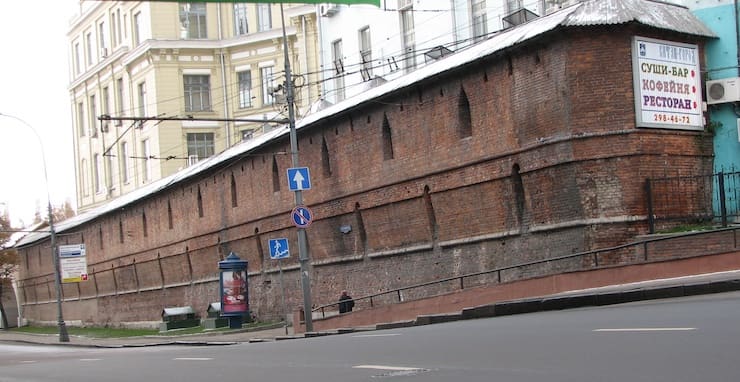
Restored section of the wall in Kitaygorodsky proezd, 2006
In the photographs below, the Ilyinsky Gate (today Ilyinsky Gate Square) with the Kitaigorod Wall before 1934 and after 1934.
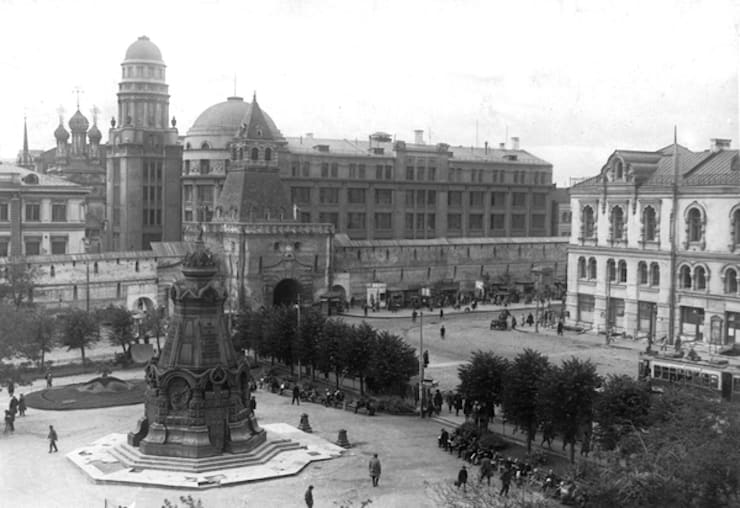
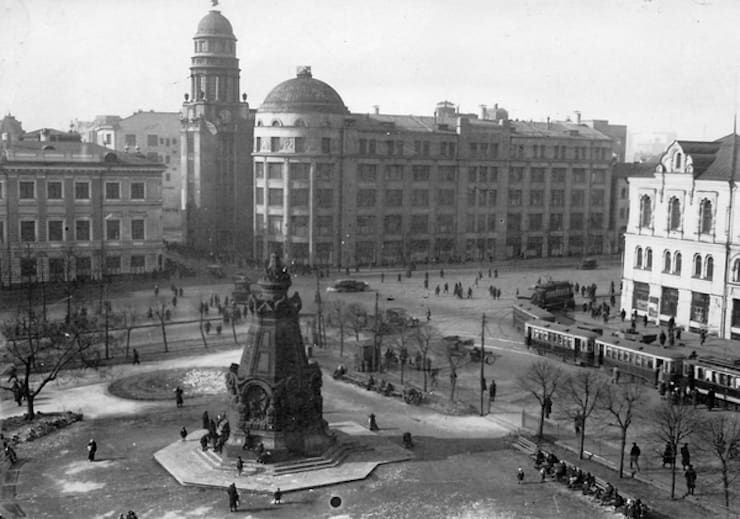
BY TOPIC: Why is the buffet only in Russia?
Attractions Kitay-gorod
Today, on the territory of Kitai-Gorod there are many historical and architectural sights, including the remains of the Kitai-Gorod wall. It is no coincidence that this area never goes unnoticed by tourists. Here is the Pokrovsky Cathedral (aka St. Basil’s Cathedral), Gostiny Dvor, GUM, Kazan Cathedral, Resurrection Gates. There have always been many churches and chapels in Kitai-Gorod, and some of them were demolished in the harsh 1930s. And the most famous streets of Kitay-Gorod – Nikolskaya, Ilyinka, Varvarka have long been considered the heart of Moscow.
See also:
.
The post Kitay-gorod: why is the center of Moscow called so? appeared first on Gamingsym.
